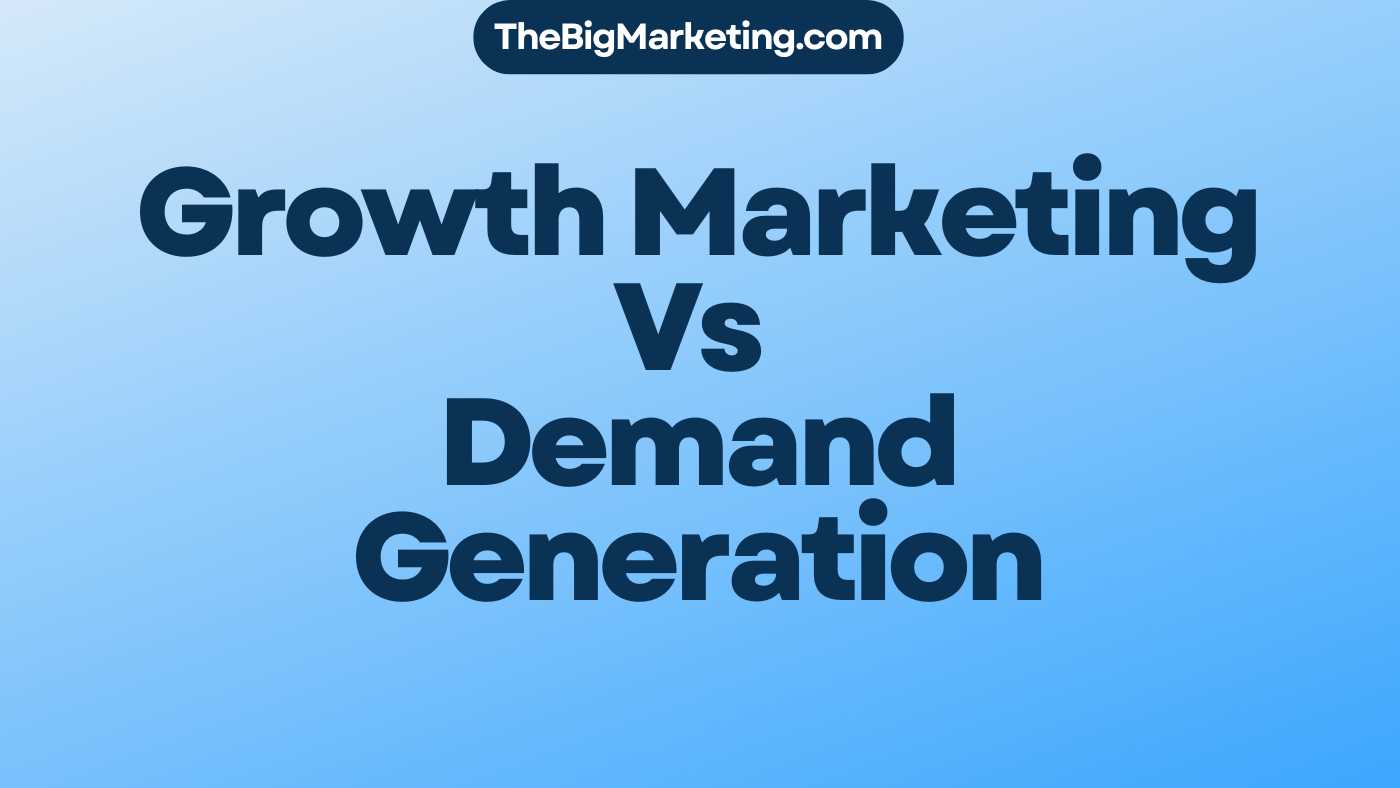Micro-segmentation is a powerful marketing strategy that allows businesses to effectively target and engage specific customer groups. It involves dividing a customer base into smaller, distinct segments based on shared characteristics such as behavior, demographics, and interests. Unlike traditional customer segmentation, micro-segmentation creates more specific groups, enabling businesses to tailor their marketing efforts and deliver personalized experiences to each segment.
Key Takeaways:
- Micro-segmentation is the process of dividing a customer base into small, distinct groups based on shared characteristics.
- The benefits of micro-segmentation include developing targeted marketing campaigns, improving the customer experience, increasing customer lifetime value, and reducing churn.
- Implementing micro-segmentation involves defining segments, creating personas, developing targeted campaigns, and evaluating and adjusting the strategy.
- Technology plays a crucial role in micro-segmentation by enabling data collection, analysis, and real-time tracking of customer behavior.
- The future of micro-segmentation lies in leveraging big data and advanced analytics to deliver highly targeted and relevant marketing campaigns.
What is micro-segmentation?
Micro-segmentation is a powerful marketing strategy that allows businesses to divide their customer base into smaller, more specific groups based on shared characteristics. Unlike traditional customer segmentation, which relies on broader categories, micro-segmentation creates distinct groups that enable businesses to target their marketing efforts with greater precision.
Micro-segmentation takes into account various data points, such as behavioral data, demographic data, and psychographic data, to identify commonalities among customers. By analyzing these shared characteristics, businesses gain valuable insights into the unique needs and preferences of each micro-segment.
For example, let’s consider an e-commerce company that sells clothing online. Instead of broadly categorizing customers by age or gender, the company can use micro-segmentation to create smaller groups based on factors such as purchasing history, style preferences, and geographic location.
This level of segmentation allows the company to tailor their marketing messages, offers, and product recommendations to each micro-segment, increasing the relevance and effectiveness of their marketing efforts.
Benefits of Micro-Segmentation
Implementing micro-segmentation offers several key benefits to businesses:
- Targeted Marketing Campaigns: By understanding the unique characteristics of each micro-segment, businesses can develop highly targeted marketing campaigns that resonate with their audience and drive higher conversion rates.
- Improved Customer Experience: Micro-segmentation allows businesses to personalize their interactions with customers, tailoring their messaging, offers, and recommendations based on individual preferences.
- Increased Customer Lifetime Value: By delivering personalized experiences, businesses can strengthen customer loyalty, encourage repeat purchases, and increase the lifetime value of each customer.
- Reduced Customer Churn: Micro-segmentation helps identify at-risk segments, allowing businesses to implement targeted retention strategies and prevent customer churn.
How to Implement Micro-Segmentation
Implementing micro-segmentation involves a series of steps:
- Define Segments: Gather and analyze data to identify distinct segments based on shared characteristics. This can include survey data, customer behavior data, and demographic information.
- Create Personas: Develop customer personas for each micro-segment, representing the key attributes, preferences, and behaviors of individuals within that segment.
- Develop Marketing Campaigns: Create targeted marketing campaigns for each micro-segment, aligning messaging, offers, and channels with the unique characteristics and needs of each group.
- Evaluate and Adjust: Monitor the performance of each micro-segment and make data-driven adjustments to optimize the effectiveness of the campaigns. Continuously analyze customer data to identify new opportunities for segmentation and refinement.
| Metric | Segment A | Segment B | Segment C |
|---|---|---|---|
| Conversion Rate | 25% | 15% | 20% |
| Customer Lifetime Value | $500 | $700 | $600 |
| Customer Churn Rate | 10% | 5% | 8% |
The table above illustrates the benefits of micro-segmentation by comparing key metrics across three different segments. Segment B, with a higher conversion rate and customer lifetime value, indicates the effectiveness of tailoring marketing campaigns to the specific needs of that group.
What are the benefits of micro-segmentation?
Micro-segmentation offers several key benefits that can help businesses optimize their marketing efforts and drive better results.
1. Developing Targeted Marketing Campaigns
By dividing your customer base into smaller, more specific groups, micro-segmentation allows you to create highly targeted marketing campaigns. This means that you can tailor your messages and offers to resonate with the specific needs and preferences of each segment, increasing the likelihood of conversions and improving your return on investment (ROI).
2. Improving the Customer Experience
Micro-segmentation enables you to customize interactions with your customers, providing them with a more personalized and compelling experience. By understanding their unique characteristics and behaviors, you can deliver relevant content and offers that address their specific needs, increasing their satisfaction and loyalty.
3. Increasing Customer Lifetime Value (LTV)
By implementing micro-segmentation, you can identify opportunities to upsell and cross-sell to your customer segments. Through targeted campaigns and personalized recommendations, you can encourage repeat purchases and increase the value of each customer over their lifetime. This ultimately leads to higher revenue and profitability for your business.
4. Reducing Customer Churn
Micro-segmentation allows you to identify at-risk customer segments and create targeted campaigns and offers to keep them engaged. By understanding the specific needs and pain points of these segments, you can proactively address their concerns and provide them with relevant solutions, reducing the likelihood of churn and improving customer retention.
How to Implement Micro-Segmentation
To successfully implement micro-segmentation, businesses need to follow a strategic approach to ensure effectiveness and results. The process involves several key steps that, when executed correctly, can lead to targeted marketing campaigns and improved customer engagement.
1. Define Your Segments
The first step in implementing micro-segmentation is to gather and analyze data on your customer base to identify distinct segments. This data can come from various sources such as customer surveys, customer service records, and transaction data. By understanding your customers’ behaviors, preferences, and demographics, you can divide them into smaller, more specific groups.
2. Create Customer Personas
Once you have defined your segments, it’s essential to create customer personas for each segment. Customer personas are fictional representations of the typical characteristics, needs, and motivations of individuals within a segment. By developing these personas, you can better understand the specific pain points and desires of your customers, allowing for more targeted marketing efforts.
3. Develop Targeted Marketing Campaigns
With your customer personas in place, it’s time to develop targeted marketing campaigns for each segment. This involves brainstorming marketing objectives and creating a comprehensive marketing plan for each persona. Tailor your messaging, offers, and channels to match the preferences of each segment, ensuring maximum relevance and impact.
4. Track Results and Make Adjustments
Effective micro-segmentation relies on continuous monitoring and analysis of campaign performance. Measure key metrics, such as conversion rates, engagement levels, and customer satisfaction, to gauge the effectiveness of your efforts. Based on the insights gained, make necessary adjustments to optimize your campaigns and improve results.
By following these steps, businesses can successfully implement micro-segmentation strategies that deliver personalized experiences to their customers and drive improved marketing outcomes. Remember, the key is to leverage data and customer insights to create targeted and relevant campaigns that resonate with each unique segment.
Tips for Implementing Micro-Segmentation
Implementing micro-segmentation requires careful planning and execution to ensure its effectiveness. Here are some best practices and techniques to consider:
1. Focus on the most valuable customers
Identify the customer segments that are most valuable to your business. By prioritizing these segments, you can allocate your resources and efforts more effectively and maximize your return on investment.
2. Test and experiment with different strategies
Don’t be afraid to try out different approaches and strategies in your micro-segmentation efforts. Test different messaging, offers, and channels to see what resonates best with each segment. Experimentation is key to finding the right formula for success.
3. Analyze customer data to identify patterns and trends
Start with the customer data you already have and analyze it thoroughly. Look for patterns and trends within each segment to understand their behaviors, preferences, and needs. This insight will guide your marketing efforts and help you tailor your messages accordingly.
4. Track key metrics and make adjustments
Measure the impact of your micro-segmentation efforts by tracking key metrics such as customer acquisition rates, customer retention rates, customer lifetime value, and customer satisfaction levels. Regularly evaluate the results and make adjustments to your strategies as needed.
By following these best practices and techniques, you can ensure that your micro-segmentation approach is successful and yields positive results for your business.
| Key Metrics | Description |
|---|---|
| Customer Acquisition Rates | The rate at which new customers are acquired within each segment. |
| Customer Retention Rates | The rate at which customers remain loyal and continue to do business with your company within each segment. |
| Customer Lifetime Value | The total value a customer brings to your business throughout their entire relationship with your company, within each segment. |
| Customer Satisfaction Levels | The level of satisfaction and happiness among customers within each segment, measured through surveys, feedback, and reviews. |
Making the Most of Micro-Segmentation
Micro-segmentation is a powerful marketing tool that can significantly impact a business’s success. By understanding customer segments and their specific needs, businesses can create personalized experiences that lead to higher customer satisfaction and increased revenue. Let’s explore some examples of micro-segmentation in action:
Example 1: Customized Marketing Campaigns
One effective way to apply micro-segmentation is by targeting specific customer segments with customized marketing campaigns. By analyzing customer preferences and behaviors, businesses can tailor their messaging and offers to resonate with each segment’s unique characteristics. For example, a fitness brand may create separate campaigns for fitness enthusiasts looking to build muscle, those interested in weight loss, and individuals seeking overall wellness.
Example 2: Personalized Recommendations
Micro-segmentation can also be used to deliver personalized product or content recommendations. By leveraging customer data, businesses can identify individual interests and preferences to offer tailored suggestions. For instance, an e-commerce platform may provide recommendations based on past purchases, browsing history, and demographic information. This approach enhances the customer experience and increases the likelihood of conversions.
Example 3: Lifecycle Marketing
Another micro-segmentation example is lifecycle marketing, which involves targeting customers at various stages of the buying journey. By segmenting customers based on their relationship with the brand, businesses can deliver relevant content and offers at each stage. For instance, a software company may provide tutorials and educational resources to prospects, exclusive offers to first-time buyers, and loyalty rewards to long-term customers.
These examples demonstrate the flexibility and effectiveness of micro-segmentation in driving results. By utilizing targeted campaigns, personalized recommendations, and lifecycle marketing strategies, businesses can engage customers on a deeper level and achieve higher conversion rates. With micro-segmentation, the possibilities for connecting with customers are endless.
Customer Micro-Segmentation vs. Product Differentiation
When it comes to marketing strategies, businesses often employ customer micro-segmentation and product differentiation to gain a competitive edge in the market. While both approaches aim to enhance customer satisfaction and drive profitability, they differ in their focus and implementation.
Customer micro-segmentation involves dividing a company’s customer base into smaller, more targeted groups based on their relevance to the business. By understanding the unique needs, preferences, and behaviors of each micro-segment, businesses can tailor their interactions and marketing efforts to deliver personalized experiences. This approach allows for a deeper understanding of customer segments and promotes higher engagement and customer loyalty. Customer micro-segmentation enables businesses to allocate resources efficiently, focusing on customers who are most likely to generate revenue and maximize their value to the organization. By customizing marketing campaigns and offers to specific micro-segments, businesses can increase customer satisfaction and drive higher profitability.
On the other hand, product differentiation centers around distinguishing a company’s products or services from those of its competitors. This strategy focuses on highlighting unique features, benefits, or brand characteristics that set a product or service apart in the market. Product differentiation can be achieved through various means, such as superior quality, innovative design, exceptional customer service, or competitive pricing. By positioning their offerings as distinct and superior, businesses aim to create a competitive advantage and attract customers who value the unique aspects of their products or services. Product differentiation is crucial in highly competitive industries where customers have numerous options to choose from.
Customer Micro-Segmentation vs. Product Differentiation: A Comparative Overview
| Customer Micro-Segmentation | Product Differentiation |
|---|---|
| Divides customers into smaller, targeted groups | Distinguishes a company’s products or services from competitors |
| Provides personalized experiences and tailored marketing efforts | Highlights unique features, benefits, or brand characteristics |
| Maximizes customer value through customized interactions | Creates a competitive advantage by positioning products/services differently |
| Enhances customer satisfaction and loyalty | Attracts customers who value unique product/service aspects |
| Increases profitability through targeted marketing efforts | Establishes a distinct market presence and brand identity |
While both strategies can contribute significantly to a business’s success, customer micro-segmentation allows for a more personalized and targeted approach to marketing. By focusing on understanding and meeting the specific needs of different customer segments, businesses can foster stronger customer relationships, drive higher customer satisfaction, and ultimately achieve greater profitability.
The Role of Technology in Micro-Segmentation
Technology plays a crucial role in micro-segmentation by enabling businesses to collect and analyze large amounts of customer data. This data, combined with advanced algorithms and artificial intelligence tools, allows businesses to identify patterns and trends among their customer base. Technology also enables businesses to track customer behavior and preferences in real-time, allowing for more targeted and personalized marketing efforts.
With the advent of modern technology, businesses now have access to a wealth of customer data that can be used to inform their micro-segmentation strategies. Through the use of data analytics tools, businesses can gather information about customer demographics, purchasing behaviors, browsing habits, and more.
This data can then be analyzed using advanced algorithms and artificial intelligence tools to uncover valuable insights. By identifying patterns and trends among their customer base, businesses can gain a deeper understanding of their audience and tailor their marketing efforts accordingly.
Technology also allows businesses to track customer behavior and preferences in real-time. With the help of website analytics and tracking tools, businesses can monitor how customers interact with their website, what products or services they are interested in, and what triggers them to make a purchase.
This real-time data enables businesses to deliver targeted and personalized marketing messages to individual customers or specific customer segments. By providing relevant and engaging content based on a customer’s preferences and behavior, businesses can increase customer engagement and drive conversions.
In addition to data collection and analysis, technology also plays a vital role in the implementation of micro-segmentation strategies. Through the use of marketing automation tools, businesses can automate various marketing processes, such as email marketing campaigns, social media advertising, and customer journey mapping.
These automation tools help businesses save time and resources while ensuring consistent and personalized communication with their target audience. By leveraging technology, businesses can efficiently execute their micro-segmentation strategies and achieve better results.
In conclusion, technology is an indispensable tool in the world of micro-segmentation. It empowers businesses to collect, analyze, and utilize customer data effectively, enabling them to identify valuable insights and deliver targeted marketing messages. With the continuous advancements in technology, the role of technology in micro-segmentation will only continue to grow, providing businesses with even more opportunities to enhance their marketing strategies and drive business growth.
The Future of Micro-Segmentation
As businesses strive to provide personalized experiences to their customers, micro-segmentation is expected to continue growing in importance. This marketing strategy allows businesses to divide their customer base into smaller, more specific groups based on shared characteristics such as behavior, demographics, and psychographics. By understanding the specific needs and preferences of different customer segments, businesses can tailor their marketing campaigns to deliver highly targeted and relevant messages.
The future of micro-segmentation holds great potential with the advancement of technology. Technologies like machine learning and predictive analytics will further enhance the capabilities of micro-segmentation. These tools enable businesses to collect and analyze large amounts of customer data, identify patterns and trends, and make real-time, data-driven marketing decisions. By leveraging big data and real-time insights, businesses can deliver personalized experiences that resonate with their customers and drive higher engagement and conversions.
In the future, micro-segmentation will enable businesses to create even more sophisticated and targeted marketing campaigns. By leveraging AI-powered algorithms and automation, businesses can streamline and optimize their marketing efforts. These advancements will help businesses reach the right audience with the right message at the right time.
The table below highlights the key trends and innovations shaping the future of micro-segmentation:
| Trend/Innovation | Impact on Micro-Segmentation |
|---|---|
| Big Data | Enables businesses to collect and analyze large amounts of customer data for enhanced segmentation and personalization. |
| Artificial Intelligence | AI-powered algorithms can analyze customer data, identify patterns, and make data-driven marketing decisions. |
| Predictive Analytics | Helps businesses anticipate customer behavior and preferences, allowing for more targeted and effective marketing campaigns. |
| Automation | Streamlines the process of creating and executing micro-segmented marketing campaigns, saving time and resources. |
With these advancements, businesses can expect to deliver highly personalized experiences that resonate with their customers, leading to increased customer engagement, loyalty, and ultimately, business growth.
Conclusion
Micro-segmentation is a valuable marketing strategy that allows businesses to create highly targeted and personalized marketing campaigns. By understanding the specific needs and preferences of different customer segments, businesses can improve their conversion rates, customer satisfaction, and overall profitability.
The benefits of micro-segmentation include developing targeted marketing campaigns that lead to higher conversion rates and ROI, improving the customer experience by customizing interactions and creating a more compelling experience, increasing the customer lifetime value (LTV) through targeted upsell and cross-sell campaigns, and reducing customer churn by identifying at-risk segments and creating targeted campaigns and offers to keep them engaged.
As technology continues to advance, the future of micro-segmentation looks promising. Businesses can expect even more sophisticated techniques and tools that leverage big data and real-time insights to deliver highly targeted and relevant marketing campaigns. With micro-segmentation, businesses can stay ahead in today’s competitive market by providing personalized experiences that resonate with their customers.






